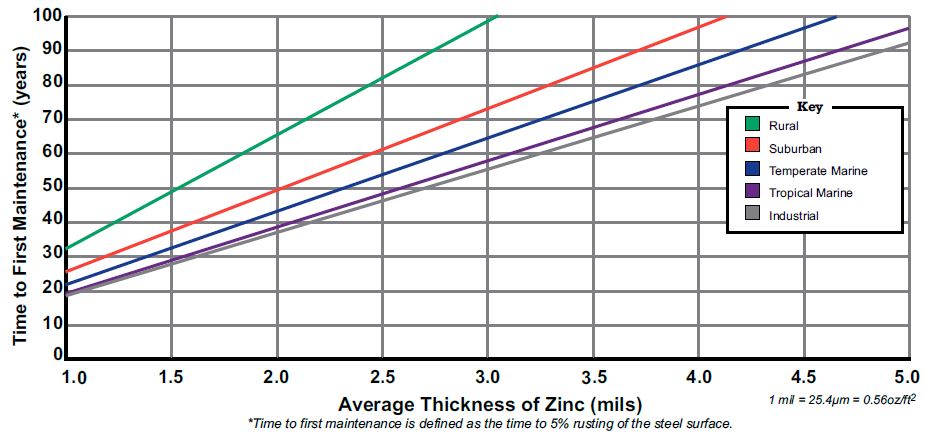Hot dip galvanizing is a method of treating steel elements used in construction. Provides a better guarantee for the material than other protection methods.
Galvanizing provides corrosion resistance and protects structures, especially in corrosive environments.
It is a process by which a layer of zinc is created on the surface of the steel to a depth specified in the relevant specification or standard.
There are basically two processes to protect components from corrosion: galvanizing and painting.
Higher maintenance costs, regular inspections, regular touch-ups and repainting due to paint wear have caused hot-dip galvanizing to become increasingly popular due to its greater durability.
Figure 01 shows the time until the first maintenance depending on the thickness of the zinc layer.


Different standards apply to hot-dip galvanizing. Depending on the project specification, appropriate standards must be used. ASTM A123, ASTM A153, ASTM A384, BS 729, EN ISO 1461 etc. should be consulted as necessary.
The galvanizing process is as follows.
- cleaning
- flow
- Galvanization
- Aftercare (optional)
All material on the surface must be completely clean. Oil, chemicals, grease, etc. must be removed before galvanizing.
During the fluxing process, the surface of the steel is wetted. Typically Application of 30% ammonium chloride and zinc at temperatures in the range of 65 – 80 0 C
Galvanizing is done by dipping the steel in a bath of molten zinc.
The bath is also called a boiler and contains at least 98% pure zinc .
The temperature would be around 450 0 C
When immersed, zinc reacts with the iron (Fe) in the steel and forms a zinc-rich alloy layer, with the upper zinc layer being made up of 100% zinc.
Furthermore, all connections made after galvanizing must be screwed. No drilling or welding is permitted after hot-dip galvanizing.
When detailing the components, the length of the bathtub must also be taken into consideration.
The thickness of the galvanizing layer must be greater than 85 mm for steels thicker than 6 mm. .
Furthermore, when determining the thickness of the zinc layer, the corrosion rate must also be taken into consideration.
The thicknesses to be maintained are indicated in Table 3 of EN ISO 1461.


Baustahl.info provides technical information about painting

